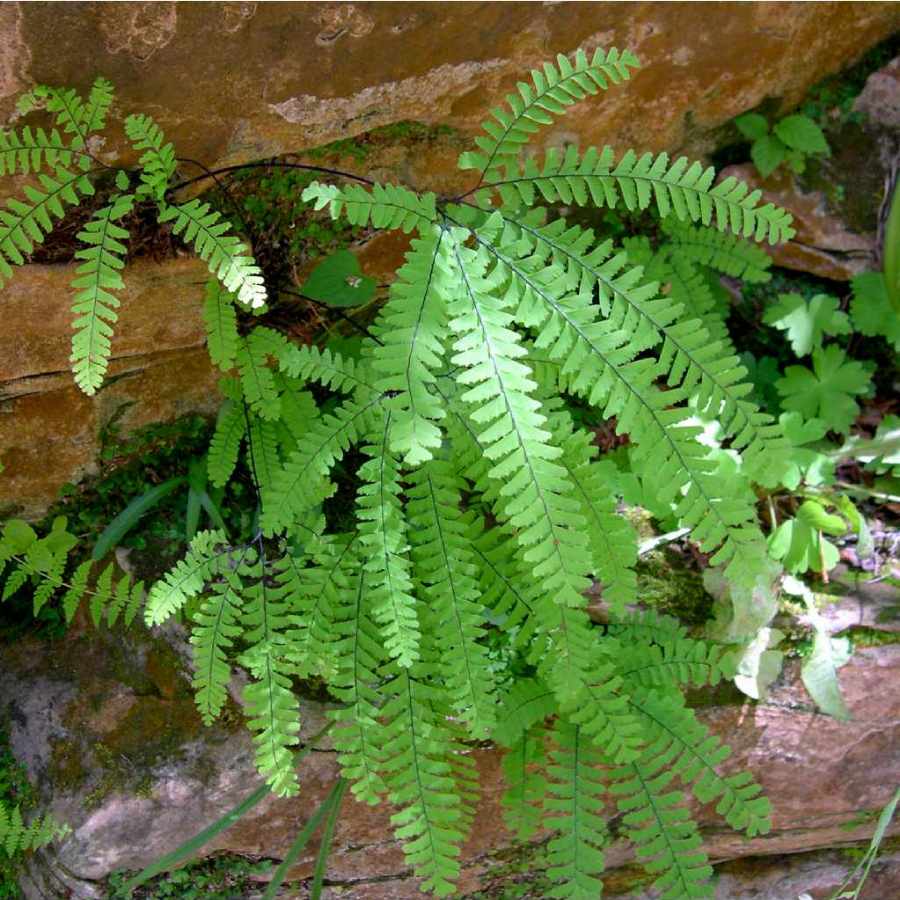
|
Family: Pteridaceae |
Plants terrestrial or on rock. Stems short- to long-creeping or suberect, branched; scales deep tawny yellow to dark reddish brown [black], concolored or bicolored, linear-lanceolate to lanceolate, margins entire, erose-ciliate, or minutely dentate. Leaves monomorphic to somewhat dimorphic, densely clustered to closely spaced [distant], 15--110 cm. Petiole chestnut brown to dark purple or blackish, with single groove adaxially, glabrous, hispid, or strigose, with 1 or 2 vascular bundles. Blade lanceolate, ovate, trowel-shaped, or fan-shaped, 1--4(--9)-pinnate proximally, membranaceous to papery, both surfaces commonly glabrous (2 species with scattered hairs), adaxially dull or shiny, not striate; rachis straight or flexuous. Ultimate segments subsessile to short-stalked (stalks terminating in cupulelike swelling at base of pinna in A . tenerum ), round, fan-shaped, rhombic, or oblong, 3--29 mm wide; base truncate to cuneate, free from costa; stalk dark, often lustrous; fertile segments with marginal lobes recurved to form false indusia. Veins of ultimate segments conspicuous, free, ± dichotomously forking near base and well above segment base [anastomosing in a few tropical species], parallel distally. False indusia light gray-green or brown to dark brown, narrow, 0.6--1 mm wide, marginal, concealing sporangia until sporangia dehisce. Sporangia submarginal, borne along or sometimes also between veins on abaxial surface of false indusium, paraphyses and glands absent. Spores yellow or yellowish brown, tetrahedral-globose, trilete, rugulate to rugose or tuberculate, equatorial ridge absent. x = 29, 30. Most diverse in Andean South America, Adiantum is primarily a tropical genus; of the nine species occurring in the flora, A . melanoleucum , A . tenerum , and A . tricholepis are strictly subtropical. Adiantum hispidulum occurs only as an escape from cultivation. The genus is absent from dry areas in the interior of the continent. Lvs shining, resistant to wetting, deciduous in our spp.; petiole slender and wiry, dark and polished; blade usually glabrous, 1-several times pinnate or partly dichotomous, the ultimate segments petiolulate, mostly broad and ±flabellate; proper indusium none, but the reflexed, modified marginal flaps of the fertile segments providing a false indusium; sori borne singly on the underside of the individual indusial flaps; graceful woodland ferns with rather short, scaly rhizomes. 200, cosmop. Gleason, Henry A. & Cronquist, Arthur J. 1991. Manual of vascular plants of northeastern United States and adjacent Canada. lxxv + 910 pp. ©The New York Botanical Garden. All rights reserved. Used by permission. |
This project was made possible in part by the Institute of Museum and Library Services [MG-70-19-0057-19].
Powered by Symbiota



